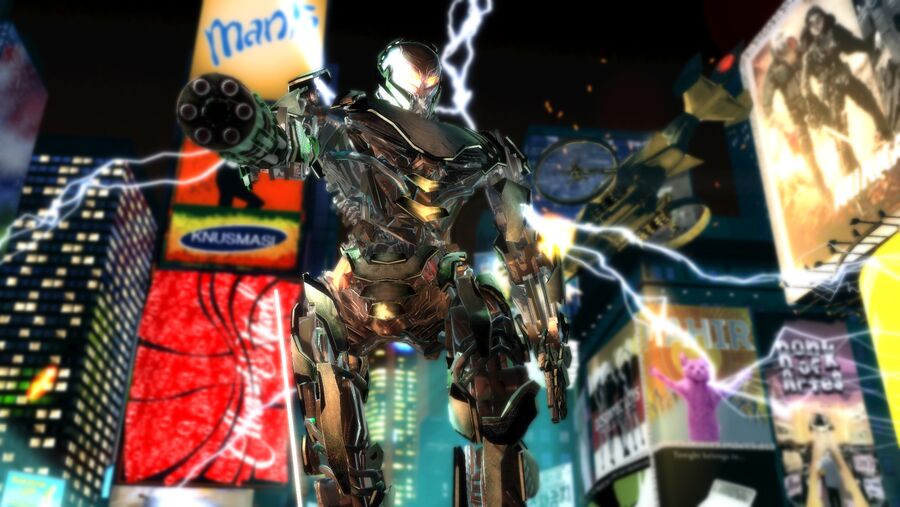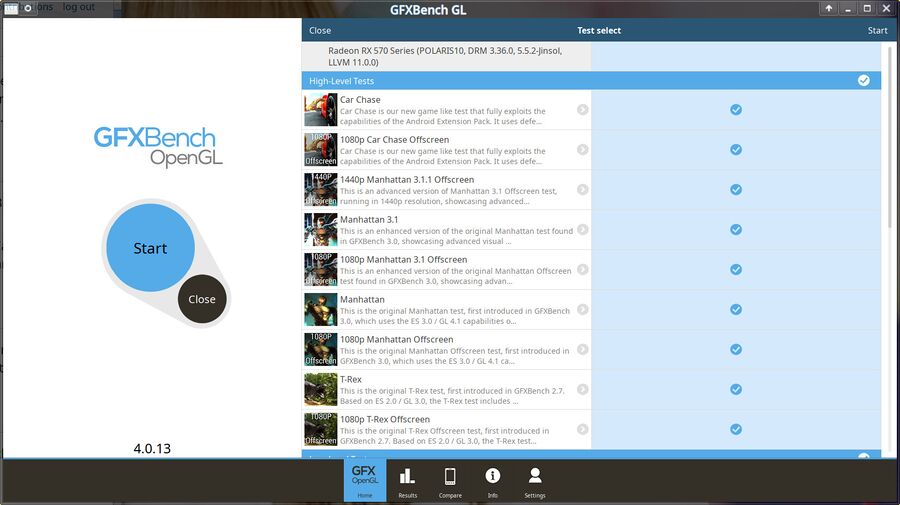GFXBench
 The "Manhattan" benchmark from GFXbench 4.0 | |
| Developer(s) | Kishonti Ltd |
|---|---|
| Stable release | 5.0 (4.0 for Linux)
|
| Operating system | Android, iOS, macOS, Windows, Linux (4.0 only) |
| License | Proprietary |
| Website | gfxbench.com/benchmark.jsp |
GFXBench is a graphics benchmark suite made by Kishonti Ltd. The latest version 5 is not available for GNU/Linux but there is a OpenGL only version (GFXBench 4) available for GNU/Linux. The more advanced GFXBench 5 version is only for Android, iOS, macOS and Windows.
GFXBench 4 for Linux has three different scene rendering tests (Car Chase, Manhattan, T-Rex) which it can test in various ways (on-screen, off-screen, etc). Detailed results are shown for each individual test. GFXBench produces scores for each individual test but does not produce any overall score for all the tests it runs.
Running GFXBench 5 for Windows on GNU/Linux using Wine fails with [ERROR]: error: NetworkError: INTERNAL_ERROR in the console and a small window that says Server error. Please come back later as of Wine 5.16.
Features And Usability[edit]
GFXBench itself is a small download. However, it will connect to a server on the Internet and download 288 MB of data the first time you start it. It will only download the data once but it will connect to the Internet every single time you launch it.
GFXBench has a number of tests you can run and a comparison tab which lets you compare the score online. GFXBench allows you to run all the tests it has available or just one or a few manually selected tests.
Each tests gets a score and some information about the test. There is no overall score for all the tests, you would have to compare single test scores if you want to compare one machine with another. There is a "Compate" feature which allows you to compare your results to other results in the GFXBench database.

The "Manhattan" scene in the GFXBench 4 benchmark.
Most of the on-screen tests will run at framerates far above 60 fps which means that the results of on-screen tests will be far below what they should be if you test with a compositor or driver configured to limit the frame-rate to 60 fps.
Requirements[edit]
The "Linux Edition" download page claims "For AMD and Nvidia proprietary video drivers are strongly recommended". You do not need the proprietary driver to run this benchmark. The only tests which is not using OpenGL 3.0 is Manhattan which uses OpenGL 4.3. Mesa has had full OpenGL 4.6 on Intel and AMD graphics cards for quite some time.
Alternatives[edit]
UNIGINE Superposition is a better choice if you just want to run a benchmark which maxes out your graphics card and shows one easily comparable score. GFXBench shows more details in the individual results it produces which makes it an interesting alternative if you want to test something specific.
Links[edit]
GFXBench is available from gfxbench.com. The GFXBench 4.0 page has the Linux which can be used to test OpenGL performance. The GFXBench 5.0 has versions for Android, iOS, macOS and Windows - but there is no Linux version of GFXBench 5.0 available. GFXBench 5.0 supports OpenGL on all the supported platforms and Metal on iOS and macOS. There is no Vulkan support in any of the GFXBench versions.


Enable comment auto-refresher